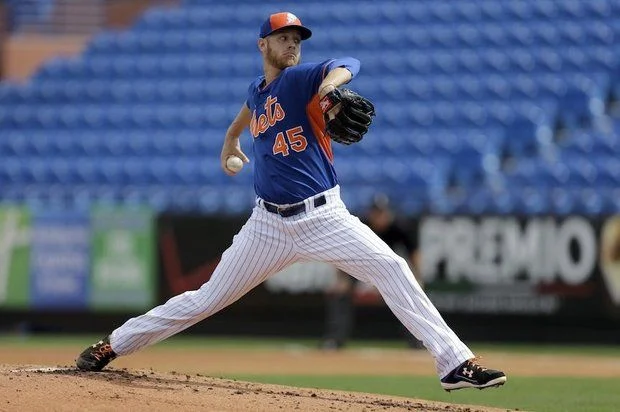Mets Pitcher Headed For Tommy John Surgery
/Zack Wheeler – pitcher for the NY Mets - has a torn ulnar collateral ligament. He will likely require ulnar collateral ligament (UCL) reconstructive surgery, aka, Tommy John surgery
What is Tommy John Surgery?
This is a surgical operation in which a ligament in the medial elbow is replaced with a tendon from elsewhere in the body (often from the forearm, hamstring, or foot of the patient.) It will likely put him on the bench for the rest of 2015 and into 2016.
The ulnar collateral ligament (UCL) can become stretched, frayed or torn through the stress of repetitive throwing motions. This is most common among professional pitchers. The condition also affects athletes in football, ice hockey, javelin throwers, racquet sports and water polo. A simple fall on an outstretched arm can also lead to UCL rupture (often with elbow dislocation.)
Anatomy of Elbow Injury
In the elbow, there are two important ligaments:
- Ulnar collateral ligament (UCL)
- aka medial collateral ligament (on the medial side of the elbow)
- Thick band of ligamentous tissue that forms a triangular shape along the medial elbow
- Lateral collateral ligament
- On the outside of the elbow
Together these two ligaments connect the humerus to the ulna and keep it tightly in place as it slides through the groove at the end of the humerus. These ligaments are the main source of stability for the elbow. They can be torn when there is an injury or dislocation of the elbow. If they do not heal correctly the elbow can be too loose or unstable. The ulnar collateral ligament can also be damaged by overuse and repetitive stress, such as the throwing motion
Youth Baseball: What Parents Need to Know
Baseball pitchers are treated most often for injured UCL. More and more children ages 10 to 18 are affected. Longer seasons with extended practice time and more tournaments increase the risk of UCL injury. Throwing volume, pitch type, and throwing mechanics can all contribute to the problem.
The UCL can become stretched, frayed or torn through the stress of repetitive throwing motions. If the force on the soft tissues is greater than the tensile strength of the structure, then tiny tears of the ligament can develop. Months or years of throwing (a baseball) hard causes a process of microtears, degeneration, and finally, rupture of the ligament
Eventually, the weakened tendon may rupture completely causing a pop and immediate pain. The dominant arm is affected most often. An athlete may believe the injury occurred at one time, but the ligament actually becomes weakened over time to the point that it finally ruptures
Children have their own unique risk factor because they have an open growth plate in the elbow called the medial epicondylar physis. Force along the inside of the elbow during throwing is more likely to cause failure at the area of the growth plate than at the UCL. Injury is often called Little League Elbow. Reconstruction of the UCL may not be needed in this age group unless the injury to the UCL occurs after the growth plate is closed
Symptoms:
- Pain along inside of elbow
- Occurs most often during acceleration phase of throwing
- If there are loose fragments or uneven joint surfaces, you may also notice popping, catching, or grinding
- Swelling inside elbow
- Bruising inside the elbow (if the ligament was ruptured)
- Slight loss of elbow motion
- Pain when closing the hand and clenching the fist
The Mets went the entire 2014 season without All-Star pitcher Matt Harvey, who blew out his elbow in August 2013.



